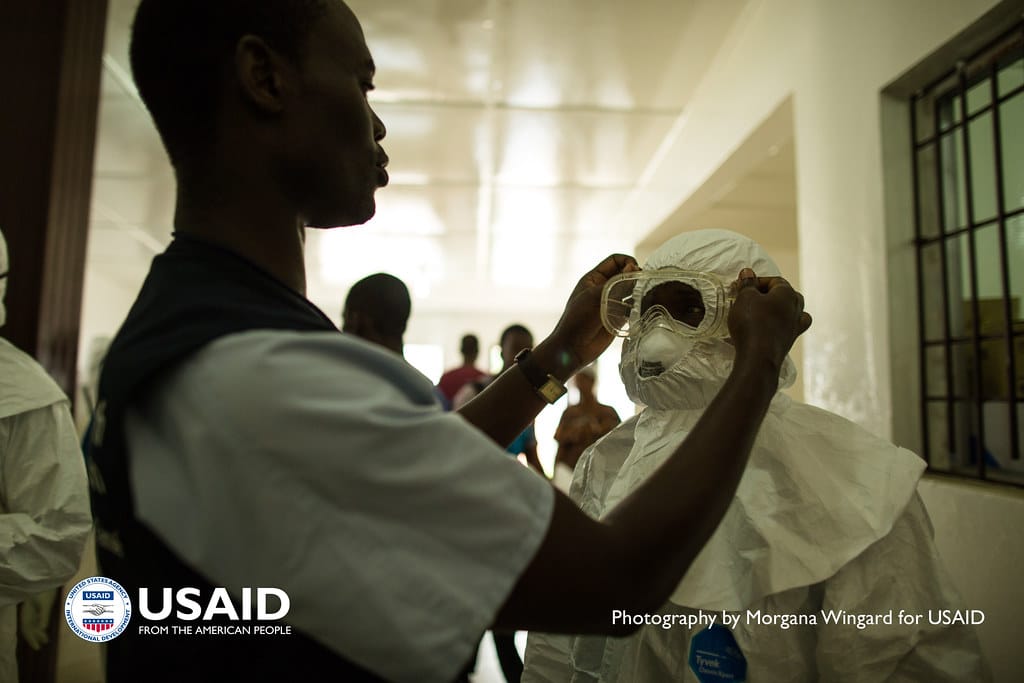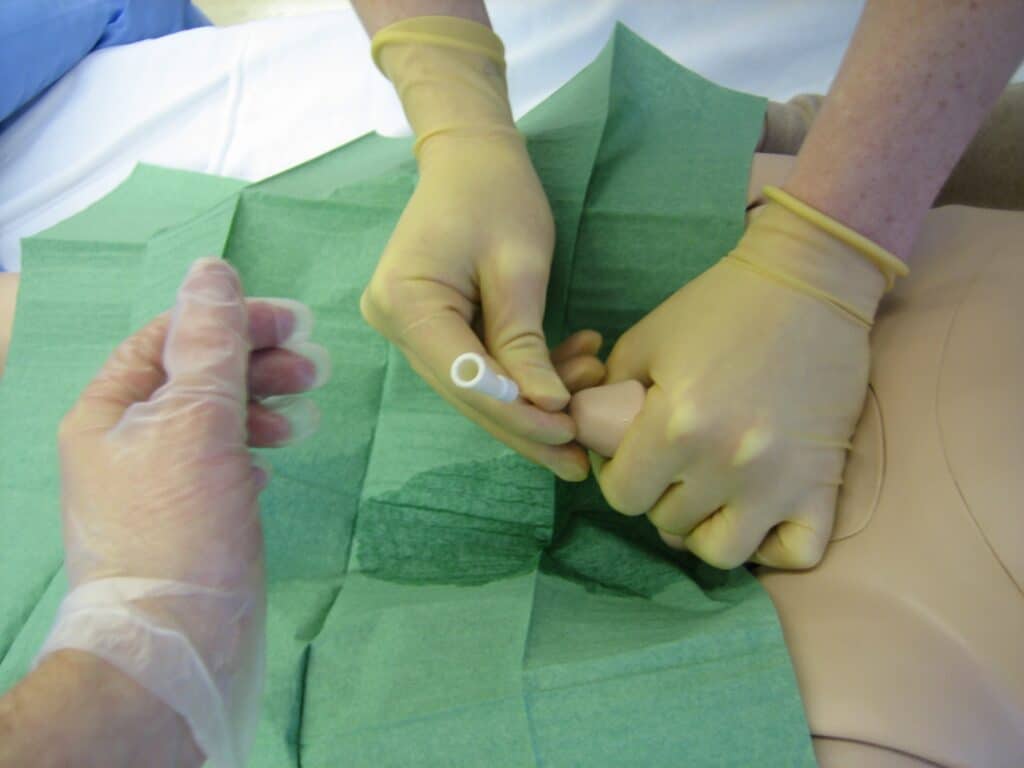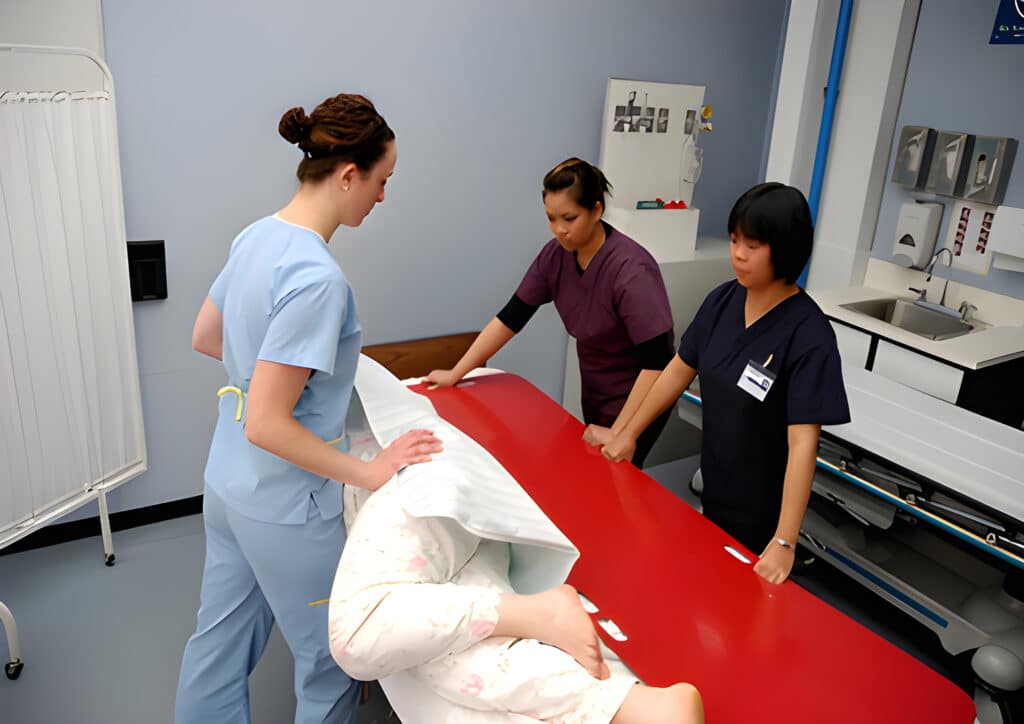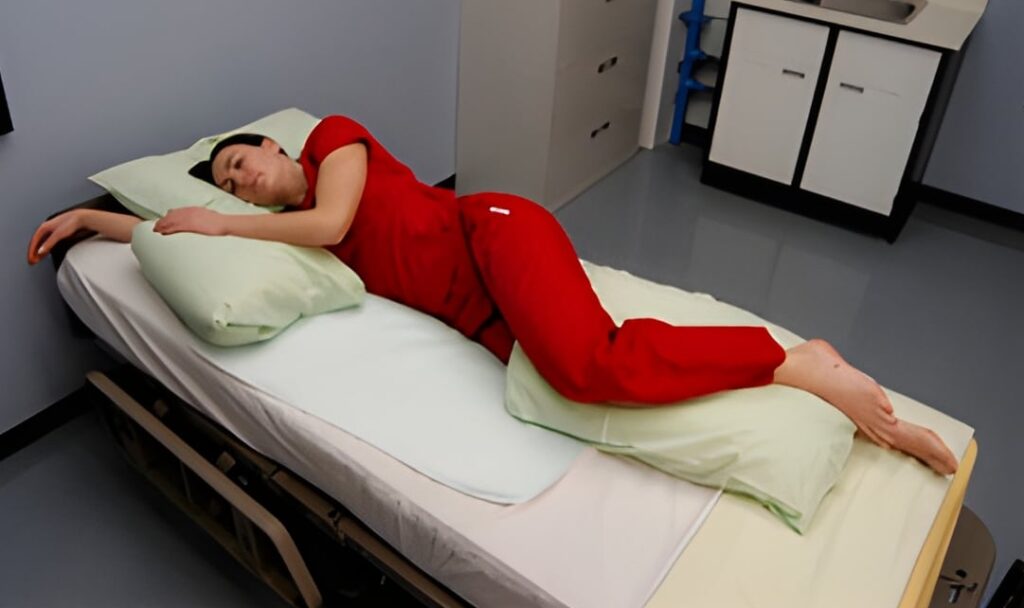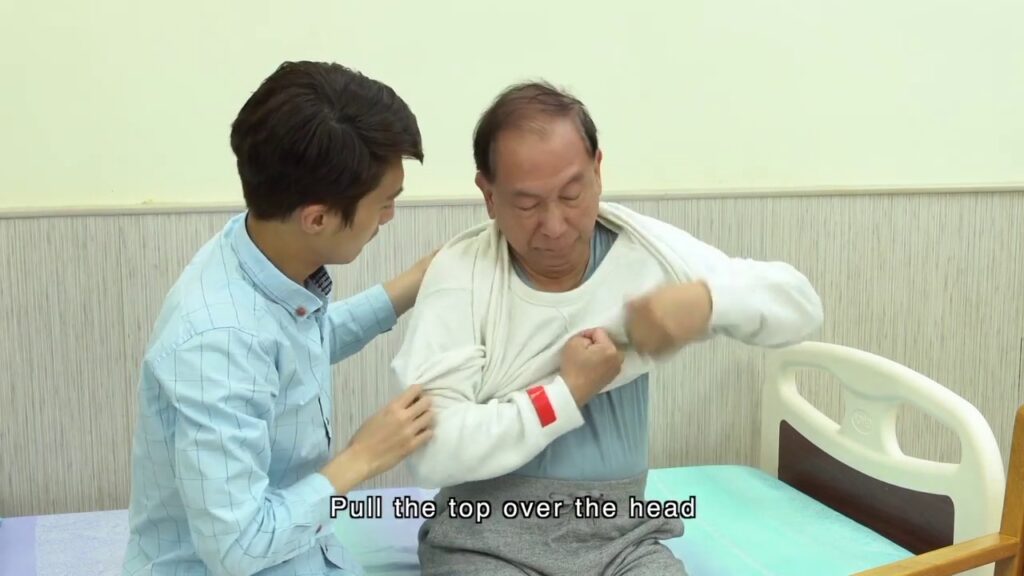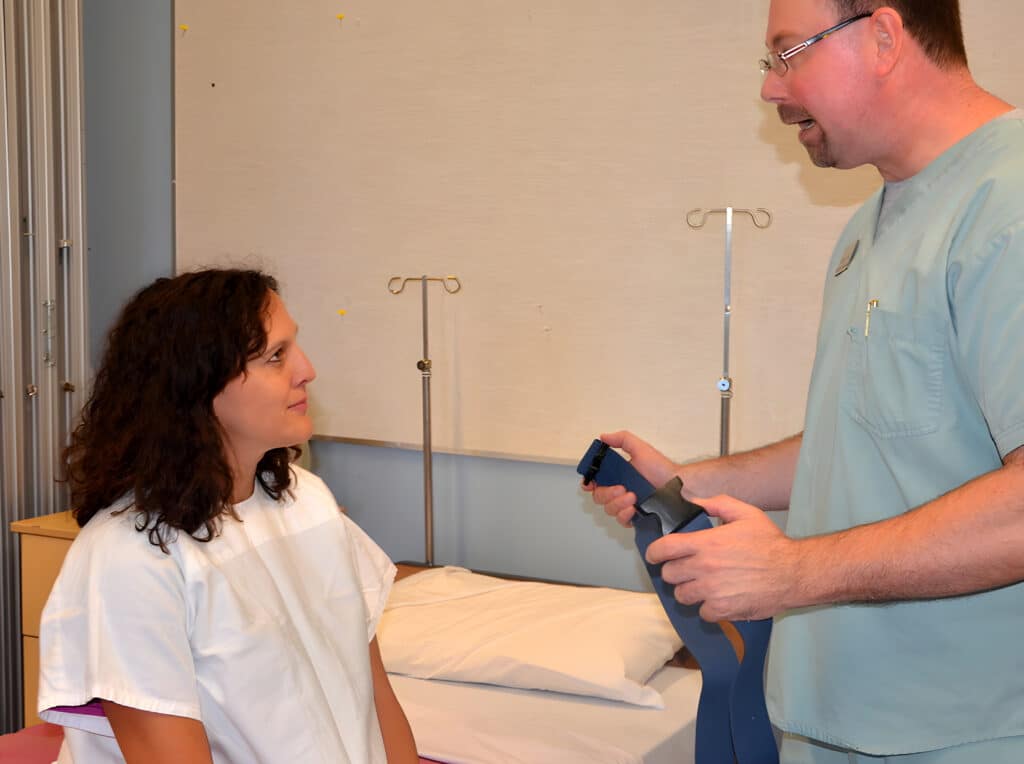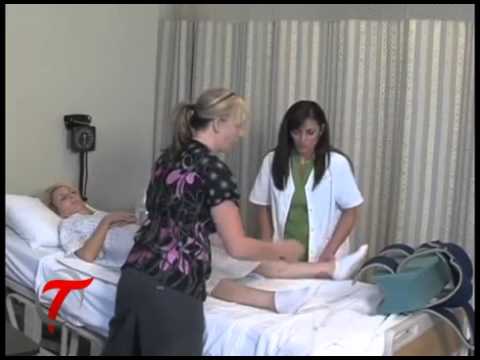Written by Hollie Finders, RN
Hollie Finders is a registered nurse with years of experience working in the health care field. She has degrees in both biochemistry and nursing. After working with patients of all ages, Hollie now specializes in pediatric intensive care nursing. Hollie’s LinkedIn
Procedure
Equipment needed: disposable gown, gloves, goggles, and mask
- Perform hand hygiene.
- Grab a disposable gown. Without shaking it, allow the gown to unfold in front of you.
- Place your arms into the sleeves of the gown. Fasten the ties at the neck.
- Ensure the gown covers your uniform in the back. Fasten the ties at the waist.
- Pick up the mask by grasping the top set of ties or the elastic bands.
- Place the mask across your face, so it covers your nose and mouth.
- Fasten the top ties and then the bottom ties, or secure the elastic bands around your ears.
- Put on goggles over your eyes or eyeglasses. Ensure a secure fit.
- To put on gloves, apply a glove to the non-dominant hand first; then, apply a glove to your dominant hand.
- Smooth out any wrinkles or folds in the gloves. Examine for any tears or holes and replace if needed.
- Pull the gloves down to cover the cuff of the disposable gown.
- Proceed to the task.
Important Information
Personal protective equipment is worn to protect the mouth, nose, eyes, clothing, and skin from unwanted pathogens [1]. In the health care setting, a patient’s condition often prompts the use of personal protective equipment; however, a health care worker is able to wear personal protective equipment whenever he or she deems it is necessary (e.g., during procedures with the potential for excessive contact with bodily fluids). Based on routes of transmission, the CDC recommends the following equipment to be worn as protection against infectious diseases: [2]
- Contact: gown and gloves
- Droplet: mask and gloves
- Contact and Droplet: gown, mask, and gloves
- Airborne: respirator
Always encourage visitors to wear personal protective equipment when visiting a patient with an infectious disease. This limits the spread of infection and promotes a safe environment.
References

